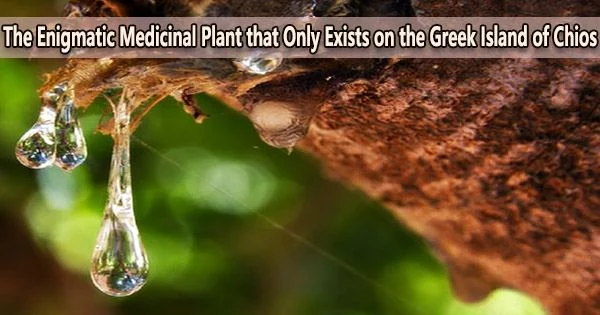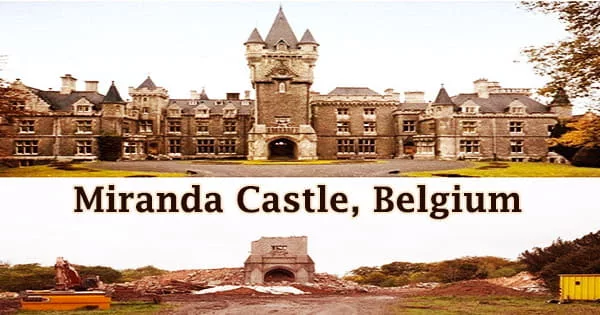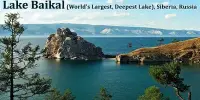Pyrgi, sometimes known as the “painted village,” is unquestionably one of the most picturesque locations on earth.
It is made mainly of houses that have been decorated with geometric engravings done using the sgraffito technique, and it is situated on Chios, the fifth-largest of Greece’s islands.
The procedure starts with three coats of white paint, black volcanic sand from the adjacent beach of Mavra Volia, and a lime finish. It was probably imported by the Genoese who governed in the Medieval Ages.
Builders then scratch through the layers and produce complex patterns.
While this labor-intensive process is very expensive, it’s a matter of pride for villagers.
Besides, money is no object. Pyrgi has proved to be one of the wealthiest villages in the Mediterranean over the ages.
The cultivation of lentisc trees, which yield the fragrant “mastiha” resin, has boosted the local economy for decades.
A museum outside of Pyrgi that provides breathtaking views of the surrounding hills covered in Spanish broom and those enigmatic lentisc trees is where the history of mastiha, which is frequently translated as “mastic,” is beautifully exhibited.
Highly-prized resin
The English word “masticate” comes from the Latin adaptation of the Greek word “to chew,” which is mastichein.
The wealthy used to chew mastiha to keep their mouths fresh and/or protect themselves from plaque in the days before dental hygiene.
As a result, it was very highly prized.
Nikos Zervoudis, a farmer from Pyrgi, demonstrates the back-breaking cultivation process in a copse of lentisc trees outside the museum.

“During the winter, the tree needs fertilizing and pruning to a round shape so that the resin can be collected properly,” he tells CNN Travel.
“But in the spring it needs a special kind of cleaning.”
“First we prepare the ‘table’ by weeding a round area below the tree and sweeping it clean of stones and pebbles. We then spread limestone to create a flat surface where the resin will fall and congeal without dissolving.
“Afterward we make shallow incisions starting from the bottom and going to the top; the bottom produces thicker droplets and the top finer ones. About three to four weeks after the incisions are made, we collect the drops from the table and pick those remaining on the trunk.
“If it rains just once during this time the resin will dissolve and the whole harvest will be lost. In the fall, we clean the crop by sifting it, washing it and picking out the impurities.”
Unique substance
What’s particularly mind-boggling is the variety of lentisc tree that produces this particular resin (Pistacia Lentiscus var Chia) only grows around 24 villages in southern Chios, including Pyrgi, collectively known as “Mastihohoria” or ‘“mastiha villages.”
There have been attempts to graft such trees in Italy, across the sea in Turkey and even in northern Chios, but all have proved futile.
According to local legend, this is because of St. Isidore, a Christian sailor in the Imperial Roman fleet who was martyred on Chios in the third century, during the reign of Emperor Decius, and dragged by horses on the rough terrain of Chios.
When the lentisc trees saw his suffering, they are said to have cried tears of mastiha.
Modern agronomists assert that it is caused by a combination of factors, including the volcanic soil of southern Chios, an exceptionally dry microclimate, and generations of eugenics, in which only the highest-yielding trees were reproduced.
The Genoese streamlined the cultivation and trade of mastiha while they ruled Chios from 1261, until the Ottoman Turks captured the island in 1566.
The Genoese created the Mastihohoria, a network of fortified settlements, from nothing in order to take control and stop smuggling. They also forcibly relocated islanders from their lands.
To fend off pirates, each of these communities was built with the same design: a perimeter wall, a gated entrance, and a maze of winding pathways leading to a central tower.
It wasn’t until 1920 that a villager from Pyrgi dared build a house outside these walls, and was subsequently mocked for “going into exile”.
The fortifications of the village of Olympi remain intact, with a few external windows and doors dating from the early 20th century. Its central tower, which lost its upper floors to the construction of nearby houses, is now split between two cafés.
The village of Mesta is the most charming of all, with its profusion of ivy, jasmine and bougainvillea creepers ornamenting a medieval maze of passageways, porticos and arcades.
Renewed interest
The trade of mastiha took a big knock after 1900, when Thomas Adams mass produced chewing gum in the United States under the name Chiclets from the resin of the Mexican sapodilla tree and marketed it worldwide.
This coincided with war and instability on Chios that saw it incorporated in the Greek state, and World War I and confrontation with Turkey followed soon after.
Today there’s a renewed interest in mastiha thanks to its perceived health benefits.
“The EU has recognized mastiha as a traditional herbal medicine for digestive problems and the cultivation know-how has been declared a UNESCO intangible cultural monument of humanity” says Ilias Smyrnioudis, research manager for the Mastiha Owners Association in the official mastiha shop in Chios Town.
“We export 90% of our annual production to 45 countries. You can even find mastiha in American health food store GNC as a food supplement.
“Most exports go to the Middle East, which never lost its taste for mastiha. Muslims use it during Ramadan as a spice in food and also as a house perfume.”
In Greece, it’s been used as a gum, a digestive liqueur and for sweet treat “submarine,” a soft mastiha fondant served around a spoon in ice cold water.
Iakovos Konstantas, an award-winning mixologist from the Oz cocktail bar in Chios Town, wants to change all that through his “mastiha project.”
“This is an initiative by the Oz team to make mastiha known in the bartending scene by entering various competitions using mastiha cocktails,” he says. “I love mastiha as a spice. Its flavor is earthy, bitter, grassy, wooden.”
Mastiha liqueur, sesame oil syrup, fresh ginger, cucumber, and a splash of pickle juice are the ingredients in Konstantas’ creation, the Black Pebbles, which is presented in a glass with two round ice cubes and roasted sesame seeds on the rim.
It’s inspired by the Mavra Volia beach, where Pyrgi builders pick up the black sand for their sgraffito designs, and it’s gratifyingly refreshing.
“When I was in New York city recently, I went to the famous Angel’s Share bar in the East Village,” he adds. “And there, 5,000 miles away from home, I spotted a bottle of mastiha liqueur.”
“Give it five years and mastiha will be used all over the world!”
Iakovos has already started his world domination project by mixing mastiha cocktails in Edinburgh, Scotland.
How to get there
Chios is a 35-minute flight from Athens via Olympic Air. Visitors can take a bus from Chios Town to the Mastihohoria or rent a car.
















